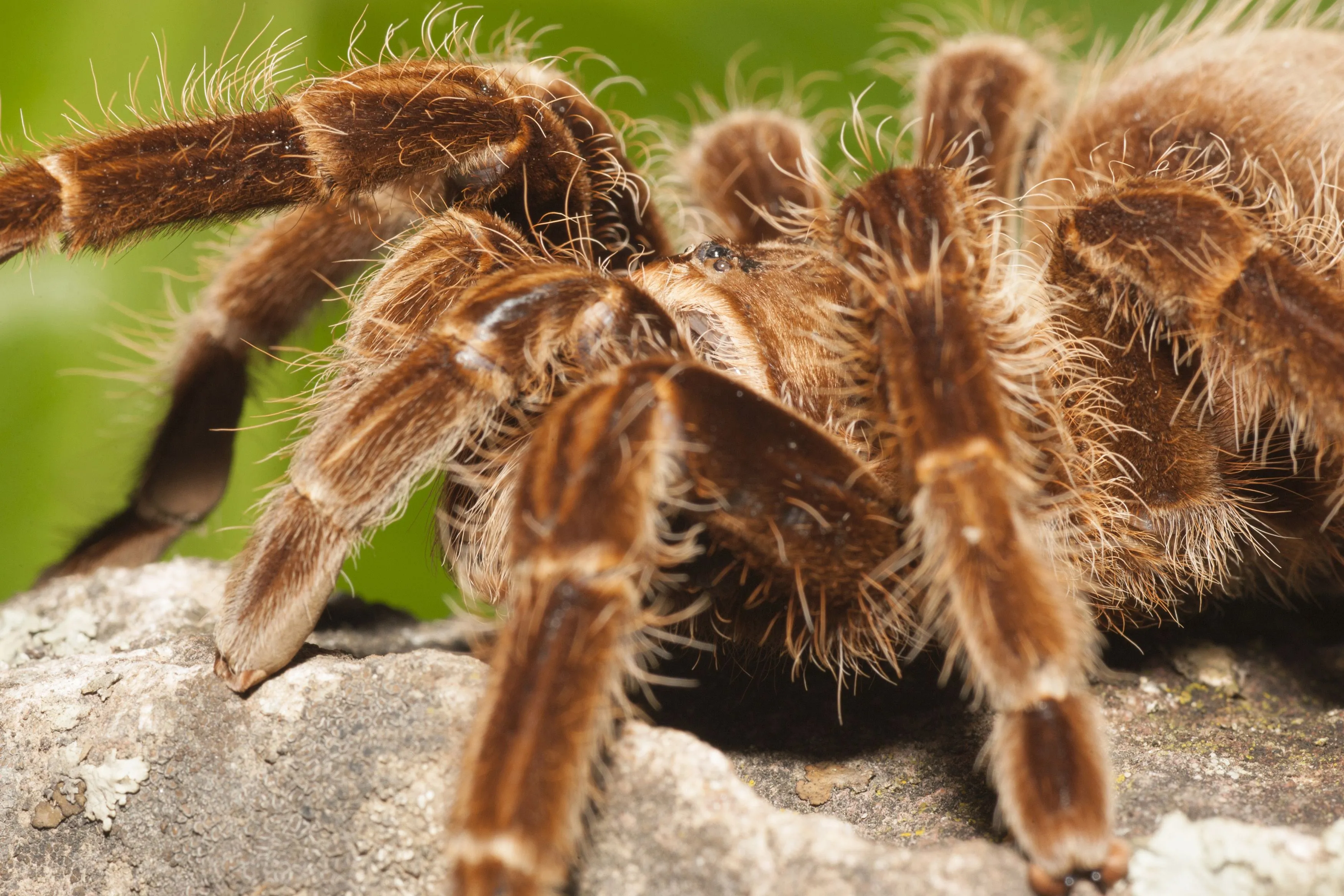Introduction
Tarantulas, with their impressive size and fascinating behaviors, have captivated humans for centuries. These arachnids, members of the Theraphosidae family, are found in various habitats worldwide, and many make intriguing pets. If you’re interested in learning about some of the most amazing tarantula species, you’ve come to the right place. This guide explores five remarkable tarantulas, detailing their appearances, care requirements, and unique characteristics. Whether you’re a seasoned arachnid enthusiast or a curious beginner, this guide will provide valuable insights into the world of these amazing creatures. Let’s dive in and discover the diverse and captivating world of tarantula species.
The G. pulchra (Brazilian Black) Tarantula
The Brazilian Black tarantula (Grammostola pulchra) is a stunning, jet-black species native to the grasslands of Brazil. Its striking appearance and relatively docile temperament make it a popular choice for tarantula keepers. The G. pulchra is known for its slow growth rate and longevity, often living for over 20 years. This makes it a long-term companion, offering years of enjoyment for the dedicated hobbyist. Its easy-going nature also contributes to its popularity, making it a suitable option for those new to tarantula keeping. The Brazilian Black is a truly remarkable species.
Appearance and Characteristics
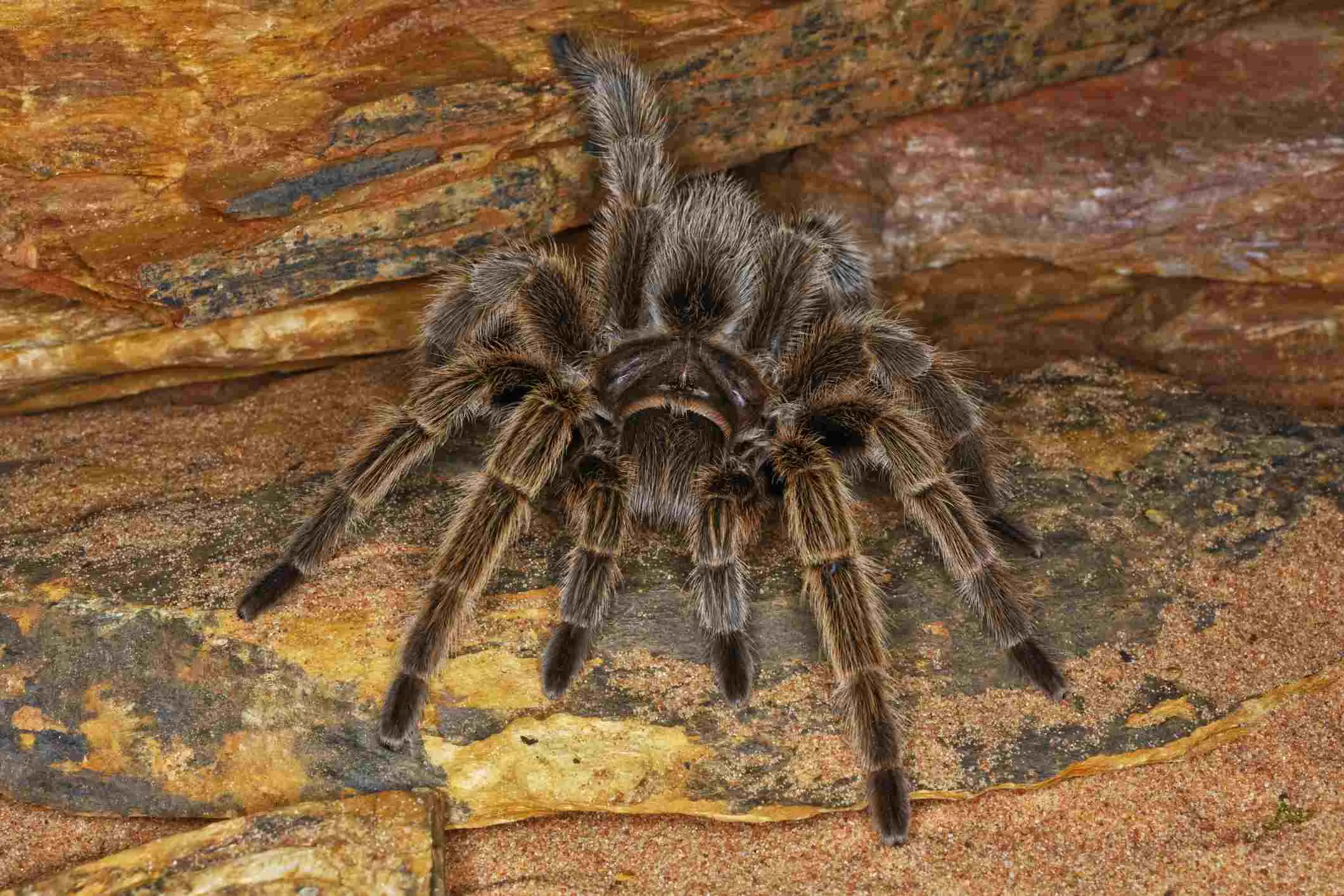
As its name suggests, the Brazilian Black is entirely black, with a velvety sheen that becomes more pronounced with age. Adult females can reach up to 6-7 inches in leg span, while males are typically smaller. They possess a robust build with thick legs, typical of ground-dwelling tarantulas. These tarantulas have urticating hairs on their abdomen, which they can flick off as a defense mechanism. They are generally calm and less likely to bite than other species. They are also known for their slow movements, which adds to their appeal as pets. The Brazilian Black tarantula is a sight to behold.
Habitat and Care
Providing the right habitat is crucial for the health and well-being of a Brazilian Black tarantula. A 10-gallon terrarium is suitable for juveniles, while adults need a 20-gallon or larger enclosure. The substrate should be a mix of peat moss, vermiculite, and coconut fiber, providing burrowing opportunities. Maintain a temperature between 75-85°F (24-29°C) and a humidity level of 65-75%. Provide a shallow water dish for drinking. Feed them insects like crickets, mealworms, and roaches once or twice a week, depending on their size and age. Ensure the enclosure is secure to prevent escapes. Regularly monitor the humidity and temperature using a hygrometer and thermometer to ensure the tarantula’s environment is optimal. (Image: tarantula-habitat.webp)
The B. hamorii (Mexican Red Knee) Tarantula
The Mexican Red Knee tarantula (Brachypelma hamorii), one of the most iconic tarantula species, is famous for its striking coloration and relatively docile nature. Native to the arid scrublands and deserts of the Pacific coast of Mexico, this species is a favorite among both beginners and experienced keepers. Its striking appearance and calm temperament make it a popular choice as a pet. These tarantulas are known for their longevity, with females often living for over 20 years. Their relatively low care requirements contribute to their widespread appeal as a pet. (Image: mexican-red-knee-tarantula.webp)
Appearance and Characteristics
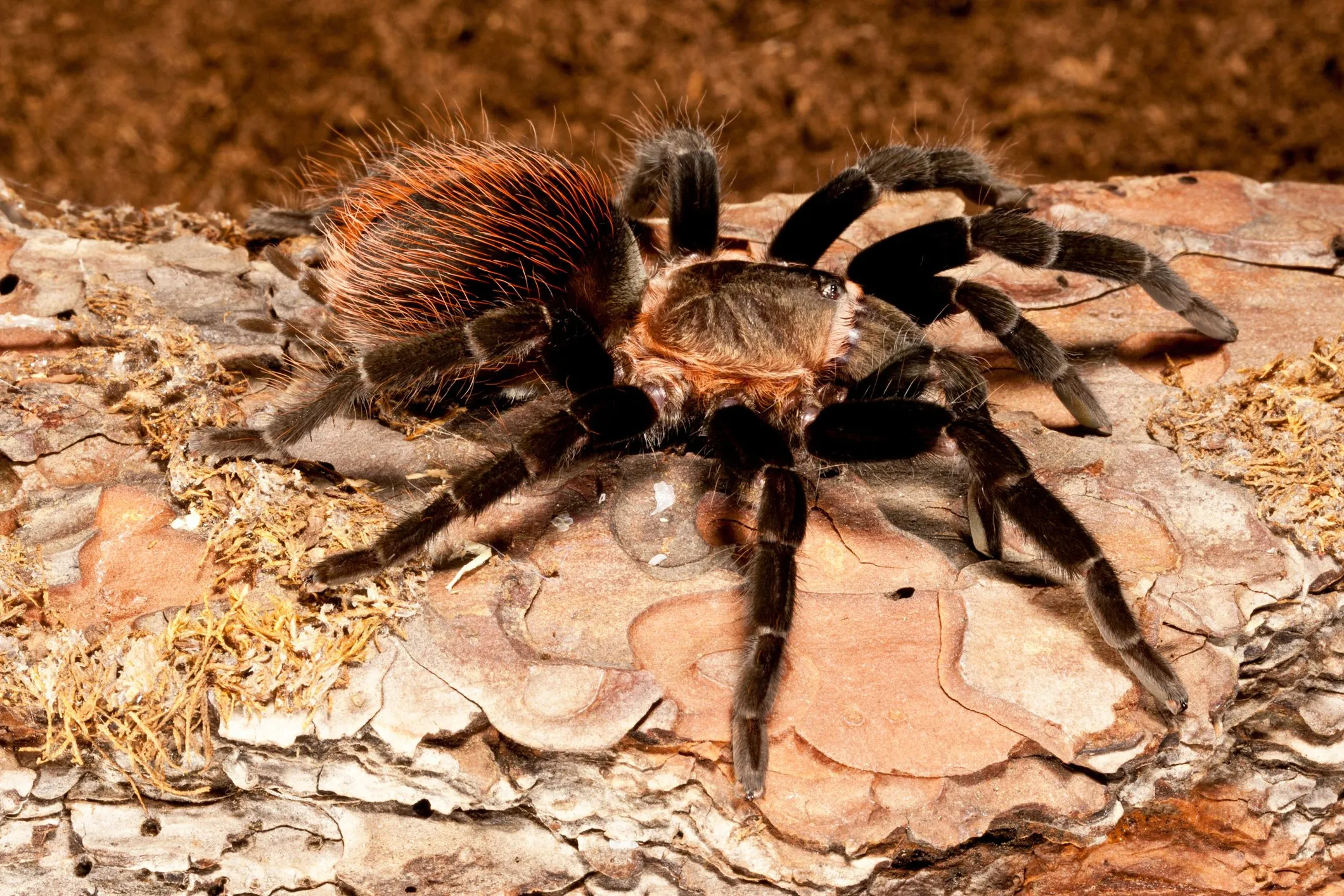
The Mexican Red Knee boasts a dramatic appearance. The primary coloration is black, accented by vibrant orange-red bands on the legs, which become more pronounced with each molt. Adults can reach a leg span of up to 5-6 inches. These tarantulas have urticating hairs on their abdomen, used as a defense. They are generally calm and slow-moving. These tarantulas often display a distinctive defensive posture, raising their front legs when threatened. They also have a habit of kicking hairs off their abdomen when agitated, acting as an irritant. These characteristics make them a unique and beautiful species.
Habitat and Care
Caring for a Mexican Red Knee involves providing a suitable habitat. A 10-gallon terrarium is adequate for juveniles, while adults need a 20-gallon or larger enclosure. The substrate should be a mix of peat moss, vermiculite, and coconut fiber, allowing for burrowing. Maintain a temperature between 75-85°F (24-29°C) and a humidity level of 60-70%. Provide a shallow water dish. Feed them crickets, mealworms, and roaches once or twice a week, adjusting the frequency based on their age and size. Ensure the enclosure is escape-proof. It’s important to handle them as little as possible to avoid stress. Observe their behavior to ensure they are healthy and comfortable in their enclosure. (Image: tarantula-feeding.webp)
The A. chalcodes (Desert Blonde) Tarantula
The Desert Blonde tarantula (Aphonopelma chalcodes) is a North American native, found in the deserts of the southwestern United States. Known for its beautiful golden-brown coloration and relatively docile temperament, this species is another popular choice for tarantula keepers. The Desert Blonde is a slow-growing species that can live for many years. This species is well-suited to those who appreciate observing a calm and beautiful tarantula. Its hardy nature and relatively low maintenance requirements make it a great choice. (Image: desert-blonde-tarantula.webp)
Appearance and Characteristics
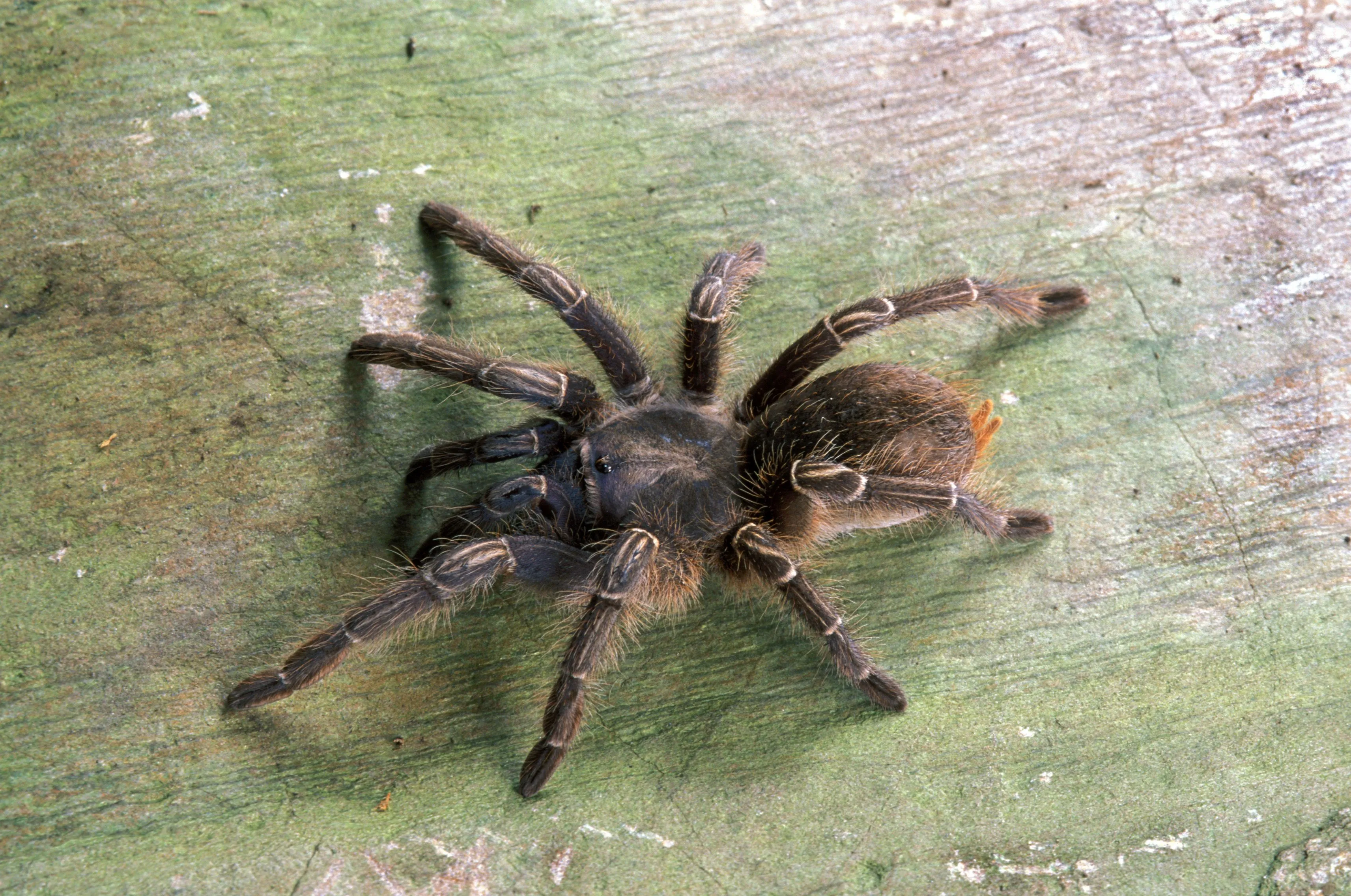
The Desert Blonde is characterized by its uniform golden-brown coloration, which gives it a beautiful, understated appearance. Adult females can reach a leg span of up to 5-6 inches, while males are generally smaller. They are robust spiders with a moderate temperament, and are known to be more prone to flicking hairs compared to some other species. These tarantulas are well-adapted to arid environments. Their coloration provides camouflage in their natural desert habitat. They often display a calm demeanor, making them a great choice for observation.
Habitat and Care
Caring for a Desert Blonde requires providing a suitable habitat. A 10-gallon terrarium is appropriate for juveniles, while adults need a 20-gallon or larger enclosure. The substrate should be a mix of sand, peat moss, and a bit of clay to aid in burrowing. Maintain a temperature between 75-85°F (24-29°C) and a humidity level of 40-50%, as they thrive in drier conditions. Provide a shallow water dish. Feed them crickets, mealworms, and roaches once or twice a week, varying the feeding schedule based on their size and age. Make sure the enclosure is secure to prevent escape. The Desert Blonde is a great species for those new to tarantula keeping. (Image: tarantula-feeding.webp)
The C. cyaneopubescens (Greenbottle Blue) Tarantula
The Greenbottle Blue tarantula (Chromatopelma cyaneopubescens) is a stunning species native to the coastal regions of Venezuela. Known for its vibrant coloration and the unique weaving of its web, this species provides a visually fascinating pet. Its bold colors and active nature provide a stunning display in any collection. The Greenbottle Blue is an arboreal species, meaning it is adapted to live in trees. It is not recommended for beginners due to its quickness and defensive behavior. This is an amazing species that will captivate any owner. (Image: greenbottle-blue-tarantula.webp)
Appearance and Characteristics
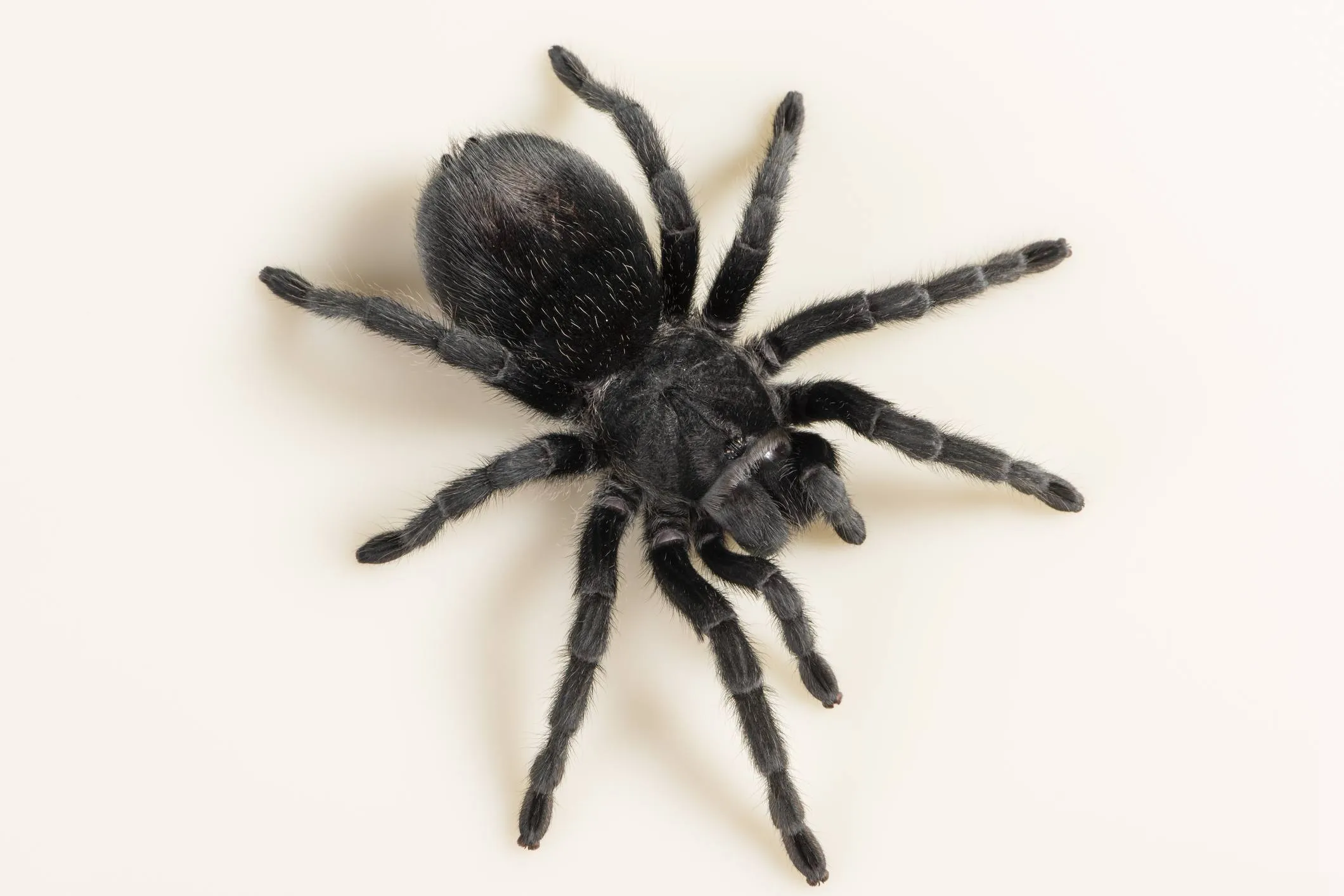
The Greenbottle Blue boasts striking colors. The carapace is metallic green, the legs are a combination of blue and orange, and the abdomen is a mix of orange and black. This species is arboreal, and adults can reach a leg span of up to 5-6 inches. Their appearance is truly one of a kind. They are active weavers, creating elaborate webs. They are known to be quite quick, so handling them should be done with care. Their colors make them one of the most sought-after tarantula species. Their beautiful appearance is truly a sight to behold.
Habitat and Care
The Greenbottle Blue thrives in an arboreal setup. A 10-gallon terrarium is suitable for juveniles, while adults need a 20-gallon or taller enclosure. The substrate should be a mix of coco fiber, peat moss, and sphagnum moss, to help with humidity. Maintain a temperature between 75-85°F (24-29°C) and a humidity level of 65-75%. Provide a water dish. Feed them crickets, roaches, and other insects twice a week. Provide plenty of vertical climbing structures. They also require a well-ventilated enclosure to avoid excessive humidity. This tarantula is a great choice for an experienced tarantula keeper.
The P. regalis (Indian Violet) Tarantula
The Indian Violet tarantula (Poecilotheria regalis) is a stunning arboreal species native to India. It is known for its intricate pattern and vibrant colors. The Indian Violet, with its striking appearance and relatively fast growth, is a captivating species for experienced keepers. This species is known for its speed and potent venom. Its care requires an advanced understanding of tarantula keeping. The Indian Violet is a truly unique species. (Image: indian-violet-tarantula.webp)
Appearance and Characteristics
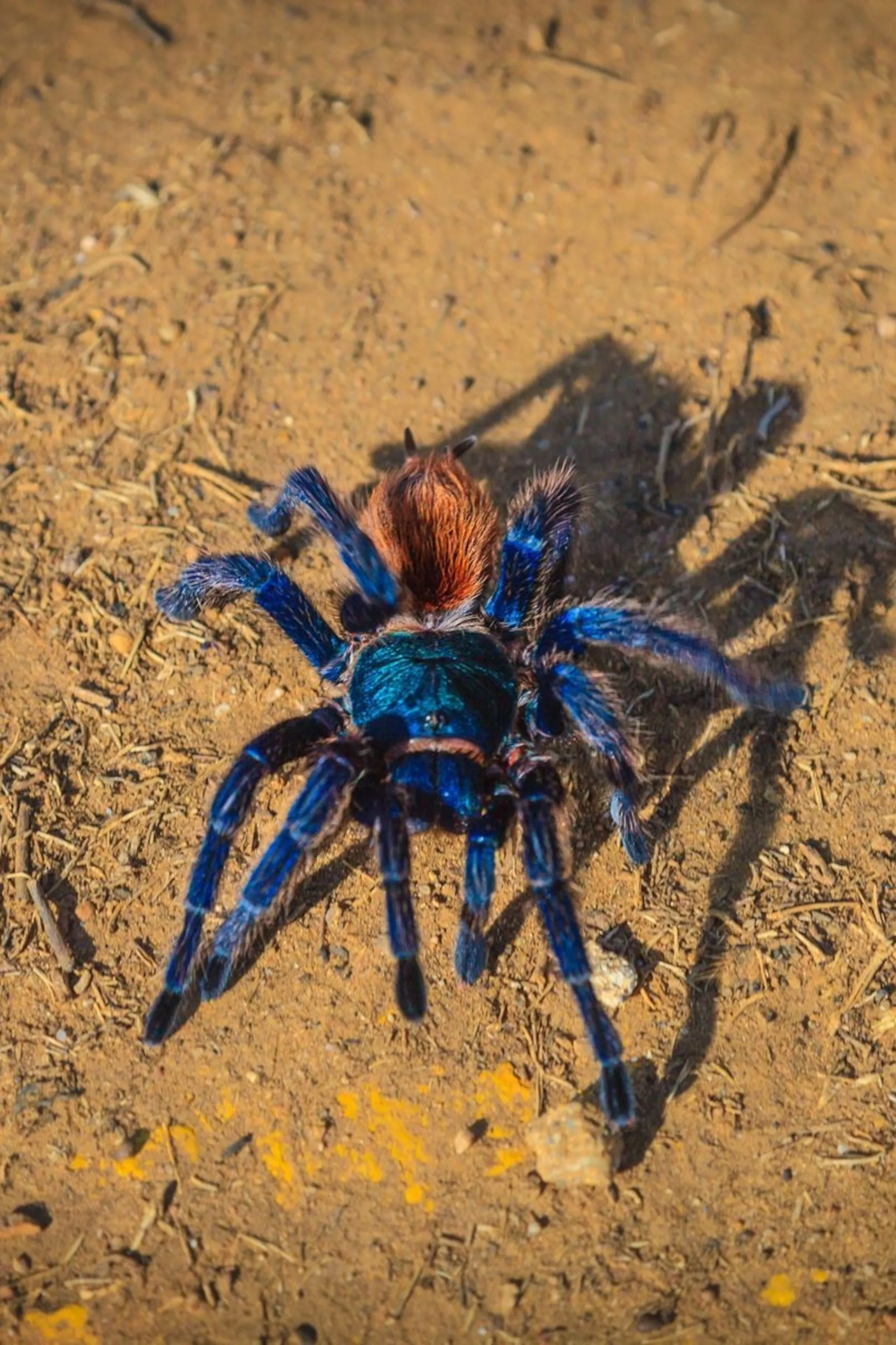
The Indian Violet is a visually stunning tarantula. The base color is a deep black, contrasted by intricate yellow or orange markings on the legs and abdomen. Adults can reach a leg span of up to 8 inches. This species is arboreal and known for its speed and defensive behavior. They possess a potent venom. These tarantulas are more suitable for experienced keepers, who understand their behaviors. They make for a truly impressive display. Their appearance is nothing short of remarkable.
Habitat and Care
The Indian Violet requires a specialized arboreal setup. A 10-gallon terrarium is suitable for juveniles, while adults need a 20-gallon or taller enclosure. The substrate should be a mix of coco fiber, peat moss, and sphagnum moss. Maintain a temperature between 75-85°F (24-29°C) and a humidity level of 70-80%. Provide a water dish and plenty of vertical climbing structures. Feed them large insects like roaches, crickets, and moths, twice a week. Handle them with extreme caution. These tarantulas are best observed rather than handled. Their care is a challenge, but the rewards are well worth the effort.
Conclusion
The world of tarantulas offers a fascinating glimpse into the diversity and beauty of nature. From the calm Brazilian Black to the striking Indian Violet, these five species represent just a fraction of the amazing tarantulas found worldwide. Each species has its own unique characteristics, care requirements, and behaviors, making them a rewarding experience for dedicated keepers. Remember to always prioritize the safety and well-being of both yourself and the tarantula. With proper research and care, keeping tarantulas can be an incredibly rewarding and educational experience. Further research and education will help you to appreciate the fascinating world of tarantulas. Happy keeping!
